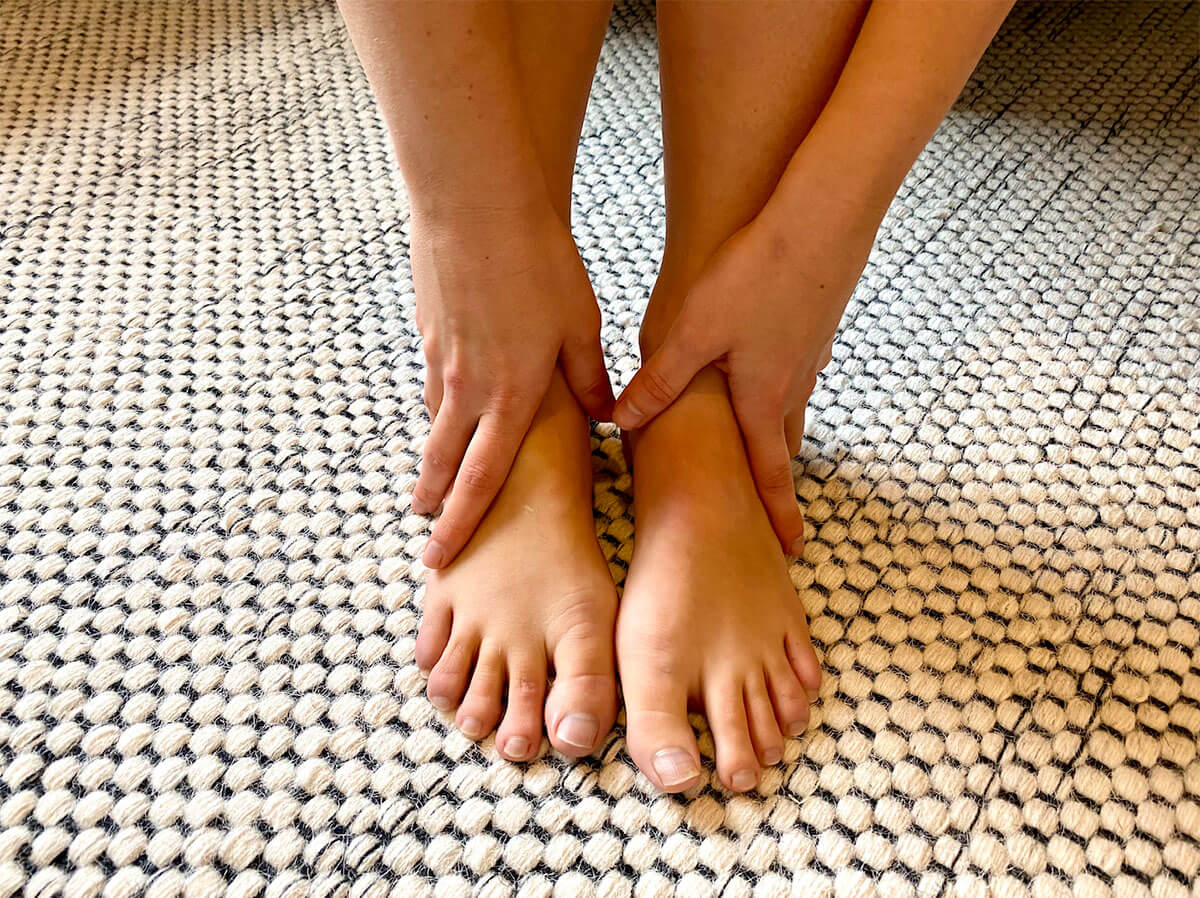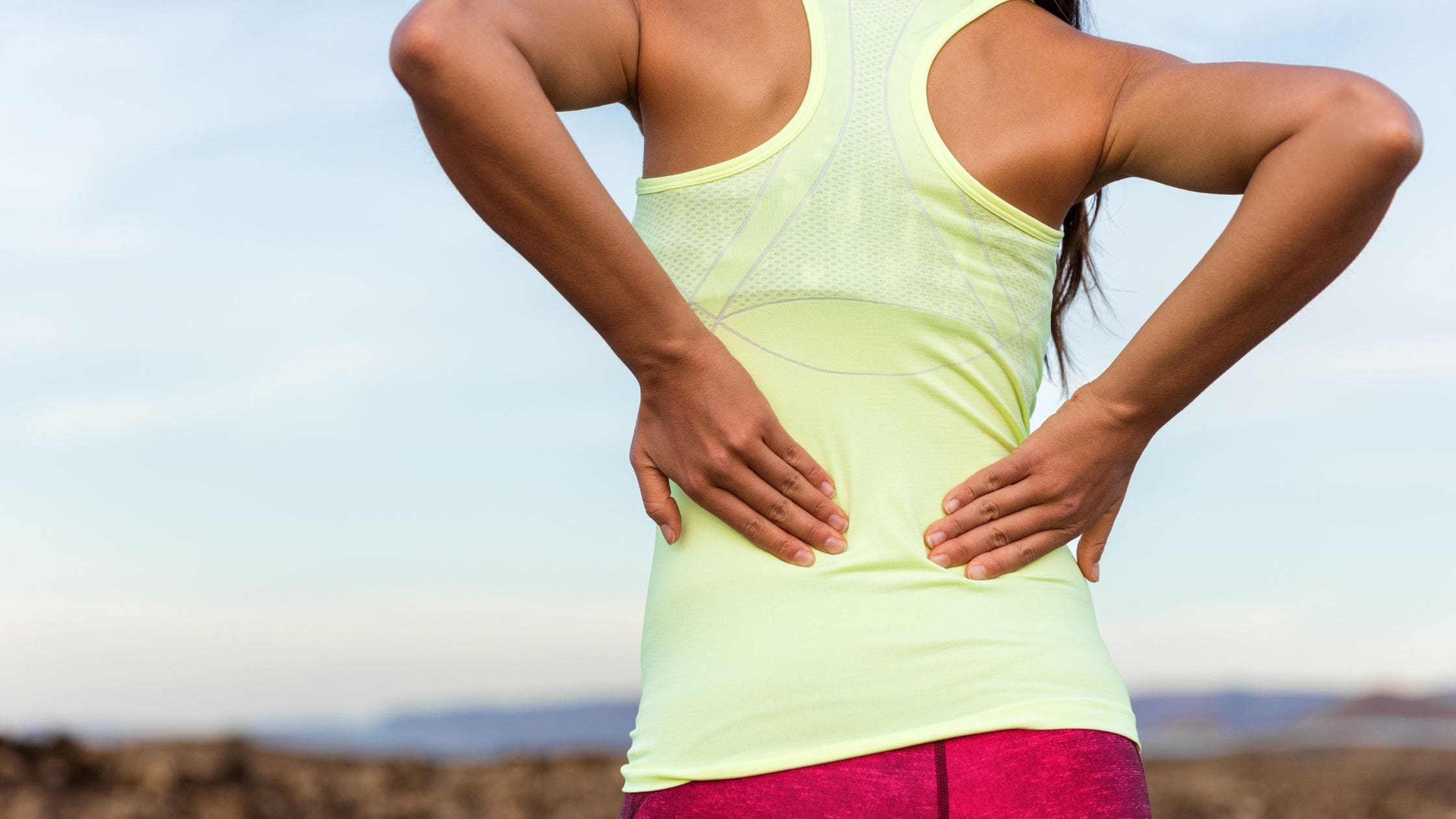Key Contributor: Gwen Berwick, Clinical Pilates Instructor
The Pilates trapeze table is probably the most versatile and supportive piece of Pilates equipment. Which is why we love using it in our classes and 1-2-1s at Complete Pilates.
The trapeze table, or cadillac as it is also known, provides lots of support for beginners and people with injuries as they get to grips with the basic Pilates movements. At the same time, it can also help clients to achieve the most challenging movements in the Pilates repertoire.
But how exactly does the trapeze table work? And why is it so great for your body? Below you’ll find details on the important features of the trapeze table, the ways it can be used and the benefits of doing Pilates and rehabilitation on it.
So, Pilates enthusiasts read on and find out everything you need to know about the trapeze table including Pilates trapeze table exercises!
The main features of the trapeze table
The trapeze table was the very first piece of Pilates apparatus designed by Joseph Pilates. It is the also biggest and most imposing out of all the Pilates equipment.
The original version was very basic, however. In fact, it was little more than a bed with springs attached to the metal bedstead. This is because Joe made it by adapting the hospital beds of his fellow inmates while he was captive in an internment camp during WW1.
For these reasons (and despite its name) the trapeze table actually resembles more of an old fashioned four poster bed than a table. It consists of a leather-clad table or “bed” area for lying on and a metal frame with four uprights positioned at each corner of the table.
The four uprights are covered in lots of small metal loops. These provide different attachment points for springs.
Attached to the frame and floating above the table area are the trapeze bar and the fluffy stirrups. These are designed for hanging exercises. Between the two uprights at one end of the table is a push bar. At the other end is a cross bar.
These features mean that an endless number of exercises are possible on the trapeze table.
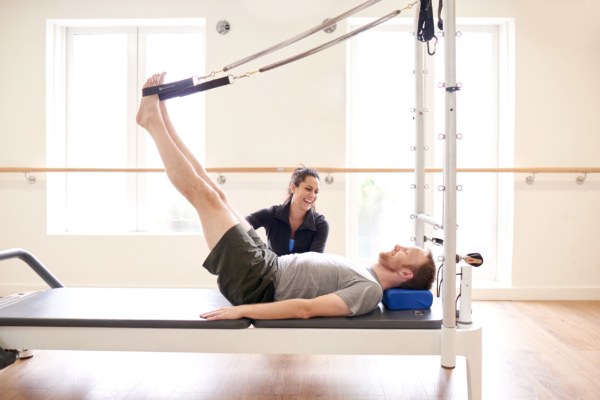
The trapeze table supports injury rehabilitation
How does it work?
The Pilates trapeze table is very simple in design. But this is what makes it such a brilliant piece of equipment.
The springs
Springs of different tensions can be easily attached to the loops that cover the metal uprights. Using these loops, exercises to strengthen and mobilise joints in the legs and arms, like arms and leg circles, are easy to prepare.
Thanks to the number of attachment points, the height of springs can also be easily adjusted. Exercises can therefore be performed on the trapeze table lying down, in side lying, kneeling or standing.
Springs can also be attached to the cross bar, which itself can be easily lowered or raised. Depending on the exercise being performed, moving the cross bar can help to make movements appropriate for different heights or different abilities.
The push bar can be sprung with springs of different tensions to alter the difficulty level of exercises. It can be used by both hands and feet. It can support more basic movements as well as challenging ones.
The trapeze swing
The hanging trapeze swing can be attached to the top of the frame and used in a variety of ways. Common exercises using the trapeze swing involve bridge-type exercises to work on spine mobility. For added difficulty, the trapeze attachment can be used from a standing position with your feet on the swing to improve hamstring flexibility.
The metal frame
The metal frame itself supports various “hanging” exercises, such as pull-ups, which help to build upper body strength. The two fluffy stirrups attached to the top of the frame are also designed for hanging exercises. These movements are great for decompressing the spine.
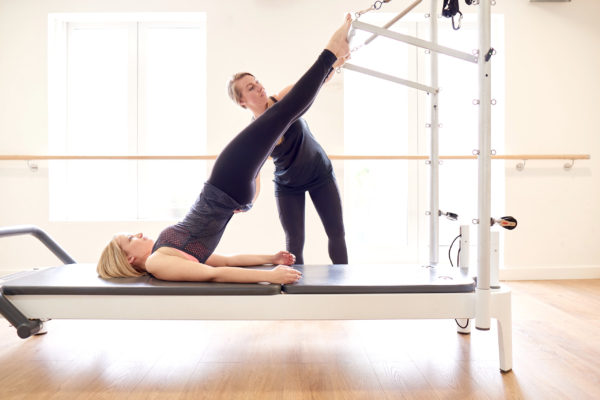
Challenge your body with the trapeze table
What do our experts say?
The trapeze table is an incredibly versatile piece of Pilates equipment, offering a wide range of exercises simply by adjusting a spring. It allows for resistance to be added or removed, and assistance to be increased or decreased, creating new challenges that help clients progress towards their personal goals.
5 Pilates Trapeze Table Exercises to Try
Roll down series
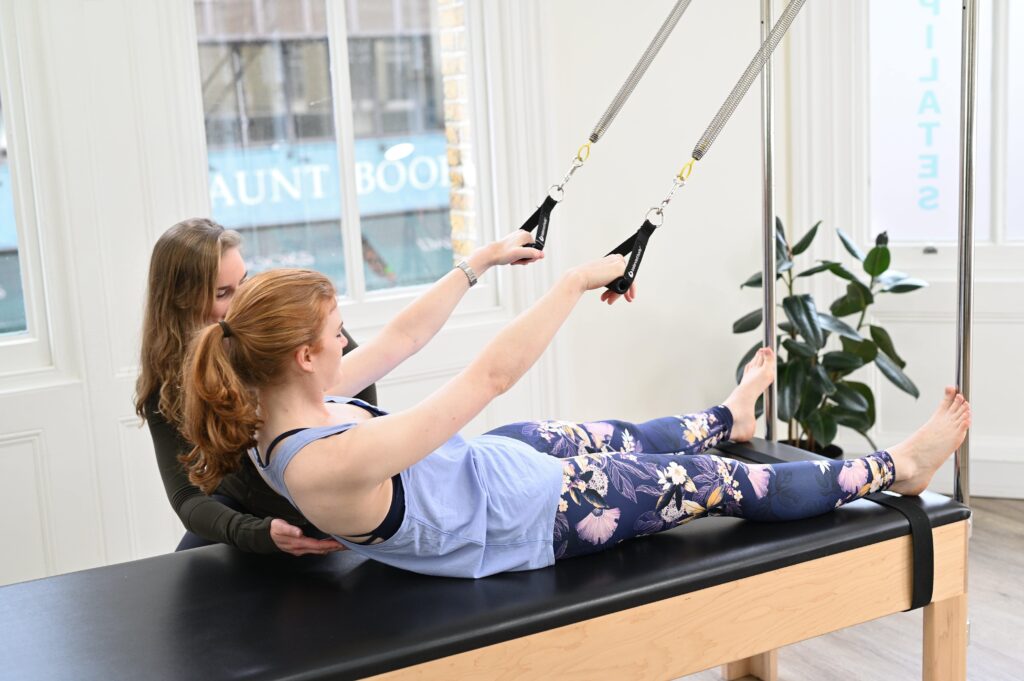
Roll down series is another great exercise for working on your spinal mobility. You are working to roll yourself down from the bottom on your spine towards the top. As you lower yourself down onto the bed, you have to work against the springs, which gives you feedback, but also gives you support, as you control your descent against gravity. As you roll up from the bed, you will use your abdominal muscles, but the springs will help you by supporting some of the load of your body. This is great preparation for the roll up exercise on the mat which requires you to do the same movement but without support.
Seated push thru
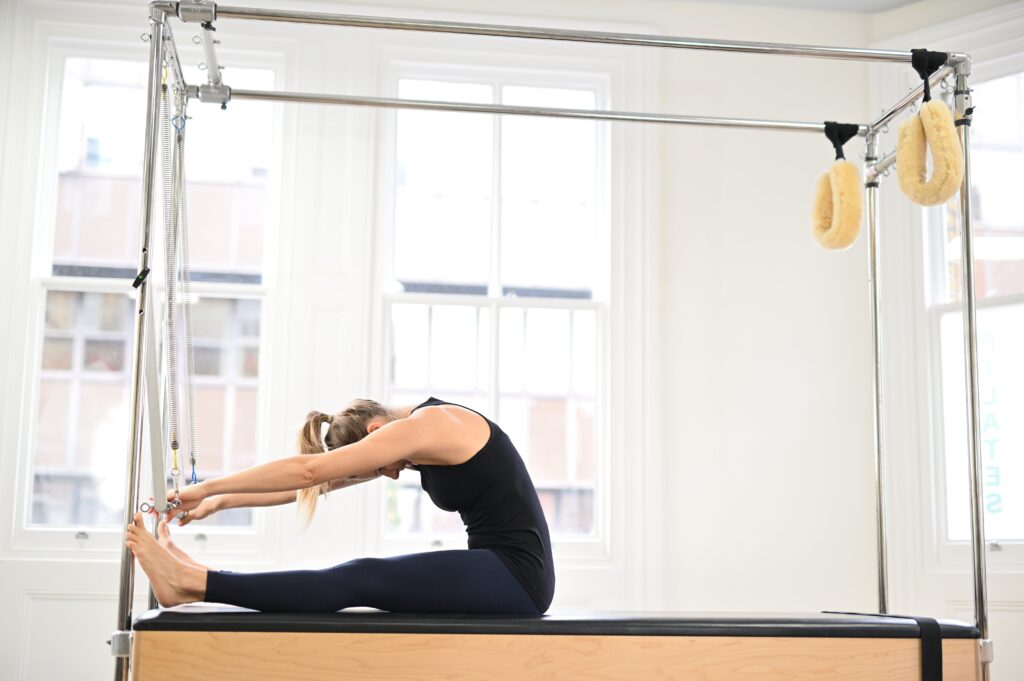
Seated push thru is a simple looking exercise – but don’t be deceived, this is anything but simple! Pressing down onto the bar against resistance means you have to use your abdominals. Reaching the bar forward, we get a full back body stretch – calves, hamstrings and spinal muscles are all elongated in this position. On the way back up to the start position, you have to control the bar against the springs, which also works your abdominal muscles eccentrically (lengthening against tension).
Thigh Stretch
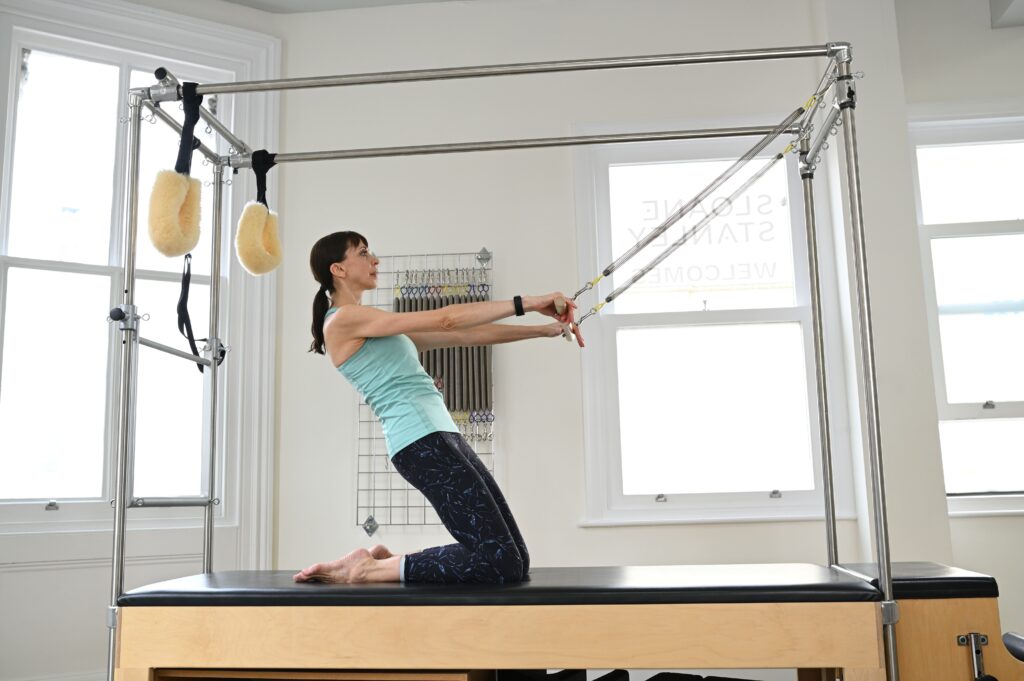
The thigh stretch exercise isn’t just about stretching! In this high kneeling position, the front of the thighs are stretched, but as you lean back into the diagonal, you are having to use your abdominals and deep neck muscles to maintain the alignment of the ribs over the hips. This is a great one for developing awareness of your spine position – as well as a great abdominal challenge. Holding onto the bar gives you feedback about where you are in space, but pressing down engages your abdominal muscles further, as well as your back of arm muscles.
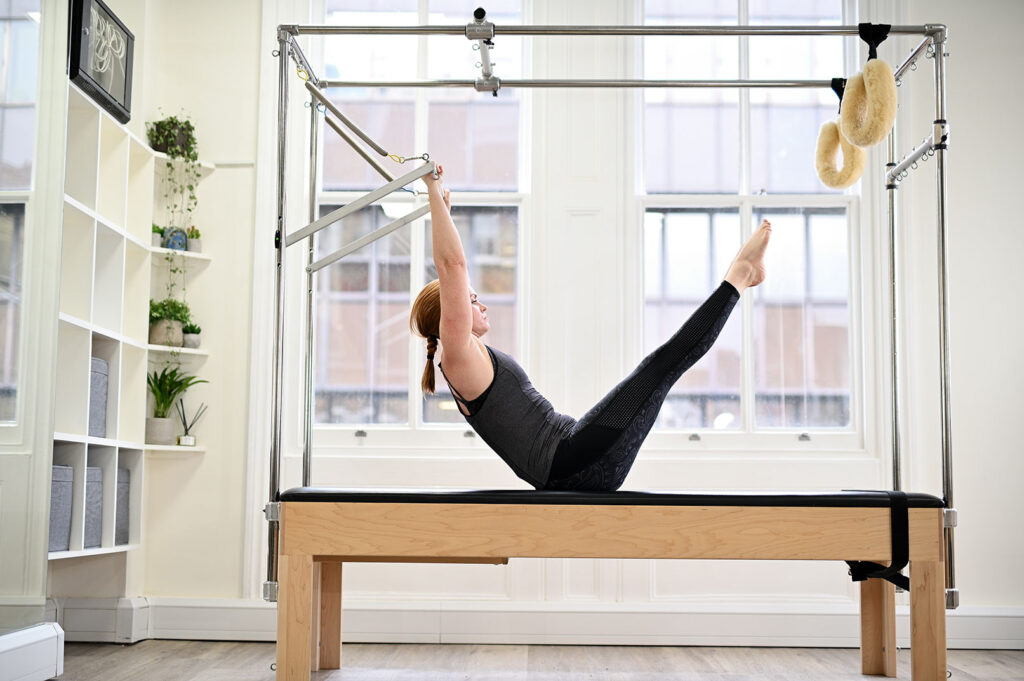
Teaser is an advanced mat exercise which works the abdominals. The teaser variation on the trapeze table enables us to work with lots of variations – from easy to challenging. For teaser, you get to use the ‘push thru bar’ which is a swinging bar that can be attached to springs to add resistance. In the teaser, the spring loaded bar is used to assist the upper body up against gravity. You can perform the teaser with the feet resting on the bed, for a beginner version – then as you get stronger you can gradually add in one leg at a time and then finally both legs.
Hanging

Hanging is a great advanced exercise. This challenges grip strength, and shoulder strength. The backbend requires not only strength of all the muscles on the back of the body (often referred to as the posterior chain) but requires lots of spinal mobility and flexibility through the front of the hips. Again, this is a great antidote to the rounded positions that we find ourselves in if we are sitting for long periods of time – but is definitely an exercise that requires working towards over a long period of time.
What are the benefits of the Pilates trapeze table?
The trapeze table and rehabilitation
The Pilates trapeze table is an incredibly supportive piece of equipment.
Unlike with the unstable carriage on a reformer bed, the bed area of the trapeze table is fixed. This creates a solid base of support for the person practising Pilates, which makes certain exercises less challenging.
Exercises like roll downs, for example, that encourage the spine to move while increasing abdominal strength are often part of our client rehabilitation programmes and can be performed on both the trapeze table and reformer. They are much more attainable on the trapeze table, however, thanks to the stable bed.
The metal frame design also makes it possible for springs to be sprung from various angles (including from above) and attached to the limbs of the person on the table. This allows clients to experience ease of movement, which is an important part of the process of rehabilitation.
For physiotherapists with Pilates training, the trapeze table’s frame design and elevated bed allows them to perform manual therapy on their clients along with Pilates – a particularly effective combination.
All of this means that people who are struggling to perform basic exercises – perhaps due to injury or illness – can really benefit from Pilates on this apparatus.
The trapeze table is also used for advanced exercises
But don’t let all this talk about rehab make you think that this piece of equipment is easy or only for injured people. This is definitely not the case.
In fact, the metal frame of the trapeze table makes the most dramatic and most acrobatic movements in the Pilates repertoire. The hanging spine extension and flexion become possible.
These exercises look impressive – and they do impressive things for your body.
Try the Pilates trapeze table
Interested in experiencing the benefits of the Pilates trapeze table for yourself? Then why not try a 1-2-1 session or studio class with Complete Pilates in London. Our Pilates studio in Angel, our Pilates studio on Fulham Road and our Pilates studio near Kings Cross, offer a highly tailored approach to your Pilates training, whether your goal is to manage a health condition, rehabilitate from an injury or to improve your strength and fitness.
Want to learn more about the equipment? Then check back next week for our post on the Pilates barrel and spine corrector.
Education is key:
These blogs are designed to give information to everyone, however, it is important to remember that everyone is different! If you have not seen one of our therapists and have any questions about injuries, what you have read or whether this may be useful to you, please just ask. We are more than happy to help anyone and point you in the right direction. Our biggest belief is that education is key. The more you understand about your injury, illness and movement, the more you are likely to improve.




